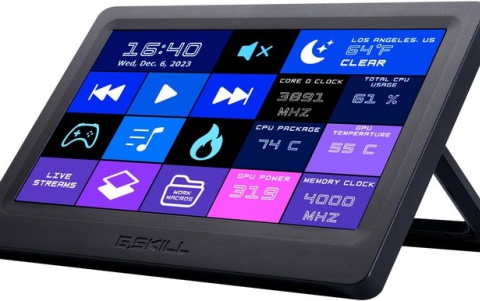
Microsoft Showcases JPEG Rival
Microsoft unveiled a new photo format it claims will provide better quality at half the size of a JPEG image. Windows Media Photo (WMP) will be built into the next-generation of Windows, called Vista.
"One of the biggest drivers for upgrading computers is digital photography, so anything we do to make digital photography better is good for Windows," said Bill Crow, senior program manager for WMP. Crow presented the technology publicly for the first time at the Windows Hardware Engineering Conference on May 24.
Microsoft has been working on the photo format with unnamed partners, including camera makers, for nearly four years.
Windows Media Photo takes a significantly new approach to the same basic discrete cosine transform technology used in JPEG. Crow described the algorithm as a bi-orthoginal lapped transform based on published work from Microsoft Research. The format also includes a fresh approach to areas such as color space and color conversion.
"It?s really a new approach, and a whole collection of innovations," said Crow. "Some of the same engineers who worked on the Windows Media Video codec VC-9 also worked on Windows Media Photo. All the lessons they learned from VC-9 but weren?t able to change because of the schedule, they applied here," he added.
WMP captures more of the raw information of photos to enable better presentation, editing and compression. Crow said WMP will easily enable 25:1 compression ratios for most uses of digital photography. That compares to a maximum of about 12:1 for consumer JPEG images before images visibly degrade.
WMP is based on a symmetrical algorithm that supports both lossless and lossy compression. It requires no complex math or special hardware support, and is based primarily on add and shift operations with few multiplies in its inner loops. Memory requirements are also minimal, in part because the algorithm supports encoding and decoding imagines in stripes that only need small buffers.
To preserve compatibility with existing systems, the WMP format uses the existing TIFF "container" including its approach to metadata. The choice of TIFF however limits file sizes to 4 gigabytes, a limit Microsoft will address for high-end users in the future. Microsoft will also release tools to support WMP on existing Windows XP systems.
Microsoft released to a broad group of licensed development partners a developers kit that includes source code for WMP. The kit will let chip and system makers build support for WMP in their products.
Microsoft has been working on the photo format with unnamed partners, including camera makers, for nearly four years.
Windows Media Photo takes a significantly new approach to the same basic discrete cosine transform technology used in JPEG. Crow described the algorithm as a bi-orthoginal lapped transform based on published work from Microsoft Research. The format also includes a fresh approach to areas such as color space and color conversion.
"It?s really a new approach, and a whole collection of innovations," said Crow. "Some of the same engineers who worked on the Windows Media Video codec VC-9 also worked on Windows Media Photo. All the lessons they learned from VC-9 but weren?t able to change because of the schedule, they applied here," he added.
WMP captures more of the raw information of photos to enable better presentation, editing and compression. Crow said WMP will easily enable 25:1 compression ratios for most uses of digital photography. That compares to a maximum of about 12:1 for consumer JPEG images before images visibly degrade.
WMP is based on a symmetrical algorithm that supports both lossless and lossy compression. It requires no complex math or special hardware support, and is based primarily on add and shift operations with few multiplies in its inner loops. Memory requirements are also minimal, in part because the algorithm supports encoding and decoding imagines in stripes that only need small buffers.
To preserve compatibility with existing systems, the WMP format uses the existing TIFF "container" including its approach to metadata. The choice of TIFF however limits file sizes to 4 gigabytes, a limit Microsoft will address for high-end users in the future. Microsoft will also release tools to support WMP on existing Windows XP systems.
Microsoft released to a broad group of licensed development partners a developers kit that includes source code for WMP. The kit will let chip and system makers build support for WMP in their products.



















